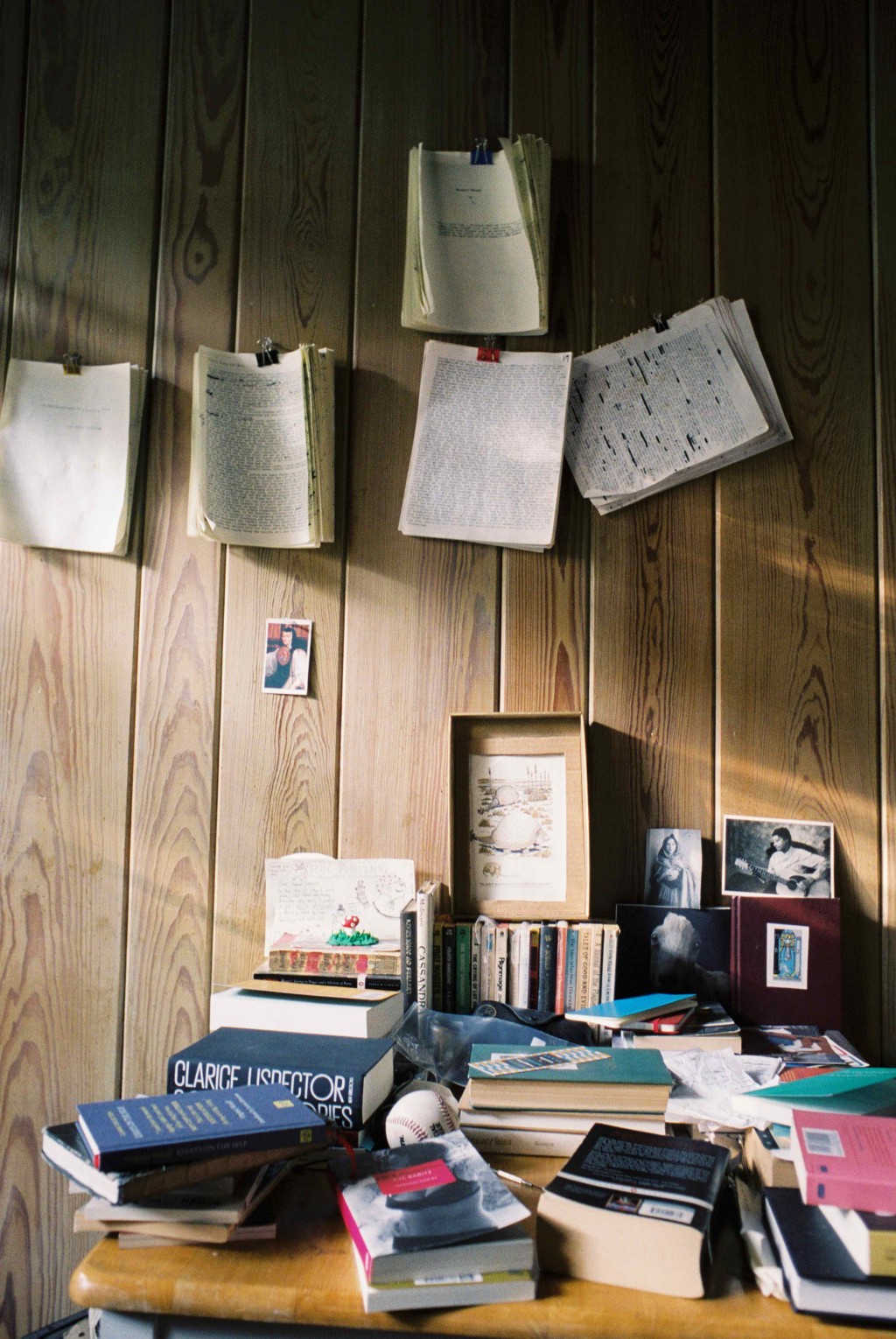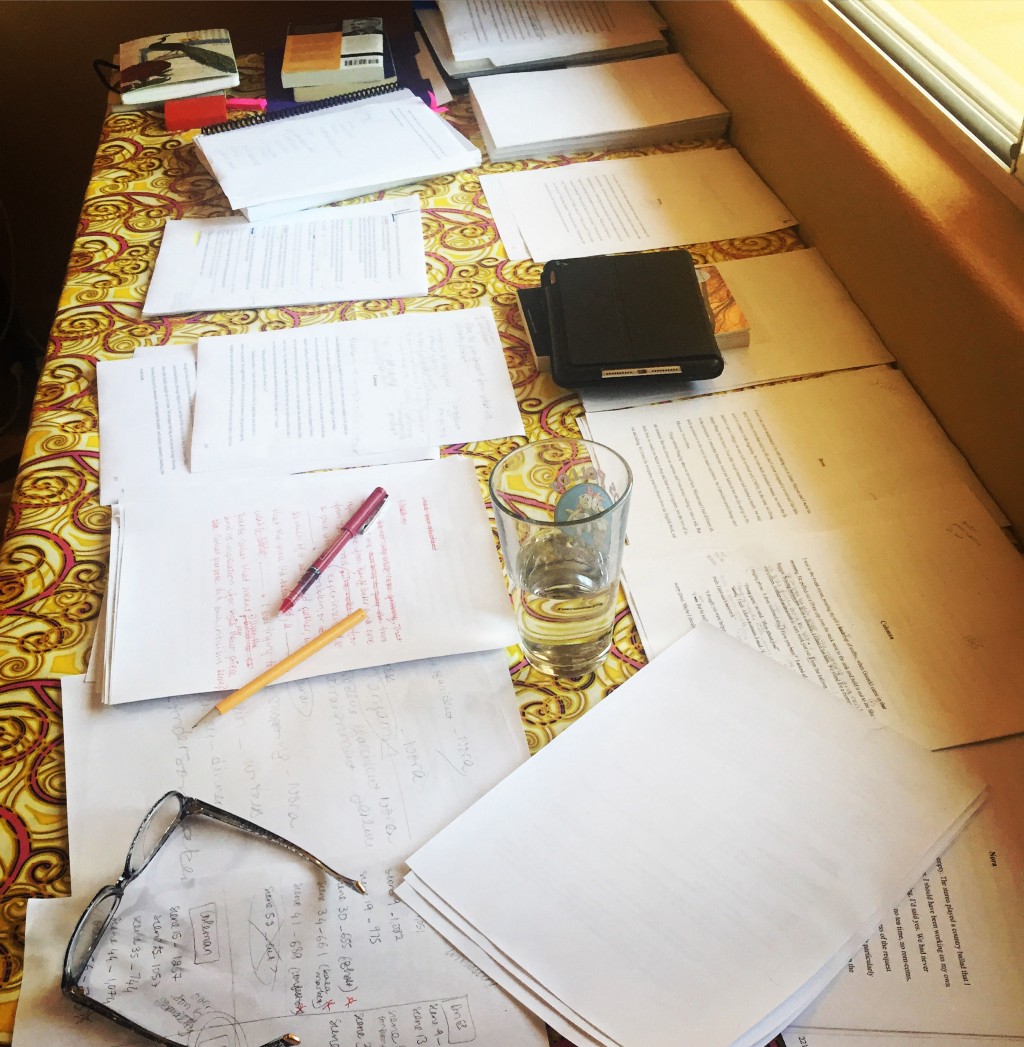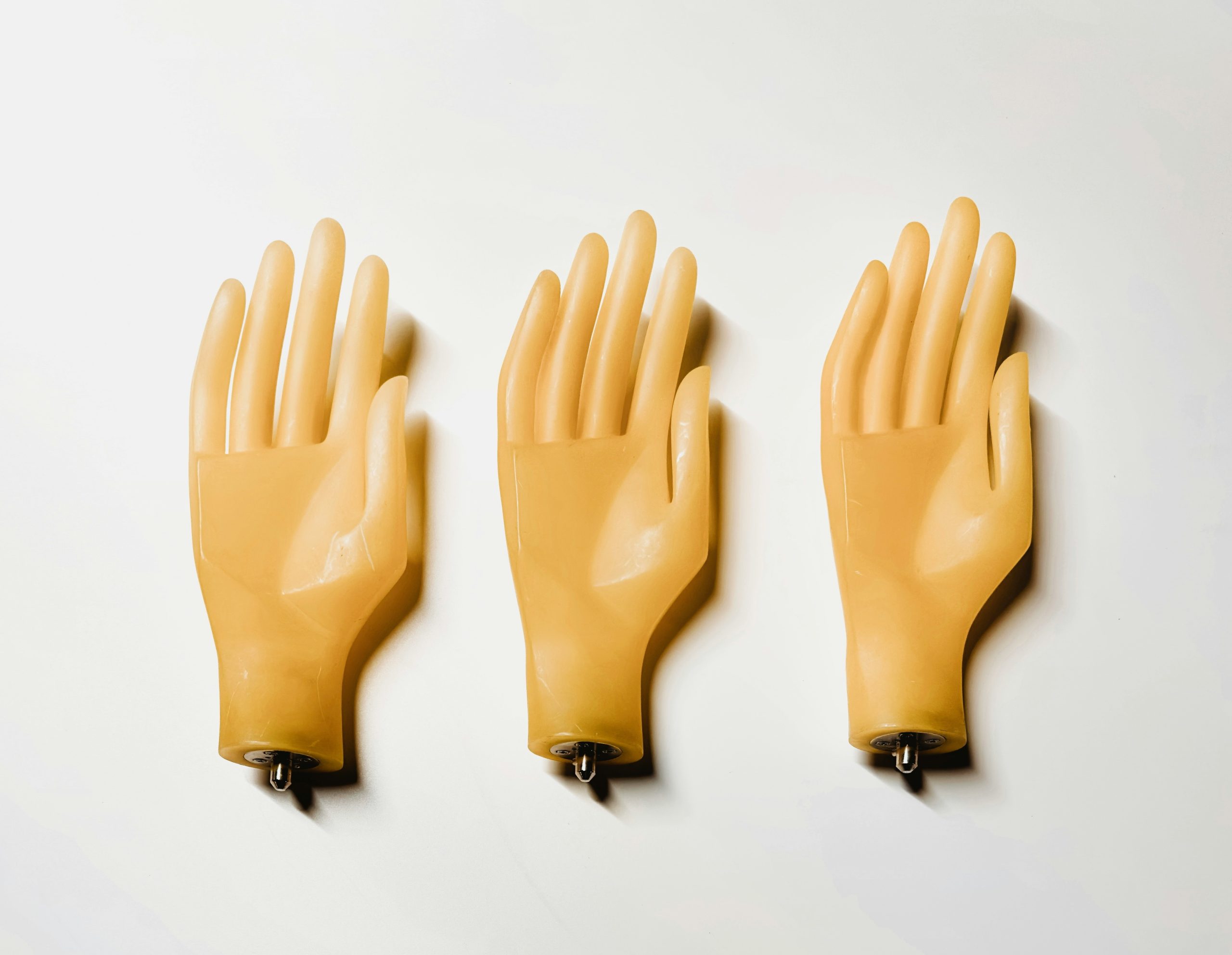Reading Lists
Here’s Where Your Favorite Modern Novel Was Written
The Writing Spaces Project takes you inside the offices, kitchens, and libraries where writers do their work

Some people sneak peeks inside medicine cabinets, but I’m fascinated by writers’ writing spaces. I want to see what environment someone else has found successful for creating work. What is the structure of their inspiration?
Does the writer keep their desk space tidy and spare or messy — brown rings staining the insides of mugs, wadded tissues, grimy keyboard? What books has the writer chosen to keep close? Are they arranged in any particular order — by author, subject, spine color — or haphazard? Curious to see if the writing space offers clues to the writing practices of their user, I surreptitiously read scrawled notes, hoping to get a glimpse of a novel-in-progress, to see what their unpolished sentences look like. How does their space inform or represent their singular journey from mind to page? Does their writing space look like they write?
A writing space feels private, intimate. It’s the room where the rawest of thoughts and emotions are encouraged. The space can offer reassurance that its desktop, and therefore the writer’s practices, are as disheveled as our own. Or it presents ideas for how to restructure our space in hopes of becoming more organized in our minds and on the page. Maybe I should switch from Leuchtturm notebooks to Postalco, write my first drafts longhand rather than on a laptop. Perhaps I need a fainting couch.
Writing Spaces Project on Instagram shares photos of writers’ workspaces. The posts capture images, both micro and macro, of what writers surround themselves with in order to make creativity happen. Following are some of my favorites.

Fernando A. Flores, author of Death to the Bullshit Artists of South Texas Vol. 1
“This is what happens to a table after the desktop computer sitting on it crashes and is never replaced. Above hang various typed projects soaking everything in. It is important to be reminded that the ancient glyptodont had a solid shell which protected it. Equally important is to have photographs of artists who have meant a lot to me throughout the years, like Sor Juana, Anaïs Nin, and Elizabeth Cotten.”

Chloe Benjamin, author of The Anatomy of Dreams and The Immortalists
“In my early 20s, writing required total silence and a controlled atmosphere: I woke up, made my bed and sat on top of it to work, a cup of coffee on the nightstand. At some point I realized that it was good to leave the house every so often and discovered earplugs, along with the pleasure of working at a coffee shop, where other worker bees provided gentle peer pressure and sustenance was at the ready.
“This year, though, I had difficulty getting into my third novel. On a whim, I stopped by the library at the Wisconsin Historical Society. “So this is why people work in libraries,” I thought, as I took a seat under the recessed, stained glass ceiling and relished the prayer-like quiet (no claustrophobic study carrels!). Total silence and a chance to leave the house: the Historical Society library might be the perfect compromise, even if I’m as late to the game as I was with earplugs.”

Manuel Gonzales, author of The Regional Office is Under Attack! and The Miniature Wife
“This is my writing space. An old Crate & Barrel table my wife and I bought over ten years ago that’s now our breakfast table in the sunniest room of our rental house. There are other rooms and an office at the university where I can write, as well, but I always find myself here. (I’m writing here right now at 6:30am, before anyone else wakes up.) But what’s funny to me about this image is that, while it looks like I’m writing, what I’m probably doing is looking for mentions of my book online because it was my pub day, and the sheet of paper next to my computer, if you can zoom in on it, is a list of chores I need to finish and groceries I need to buy before people come to our house after we launch the book at a bookstore near our house. So even when I’m not writing, the space just feels like I’m writing.”

Jenn Shapland, essayist (Tin House, THE Magazine, Pastelegram, The Lifted Brow, Electric Literature, The Millions)
“This is the desk where I finished writing my book this summer while housesitting for an artist in northern New Mexico with my partner and our three cats. It had a family of putty-colored spiders living under it — my correspondents — and twice in the morning I found dead wasps sandwiched into my laptop. That’s Gary (named for Shteyngart) on the floor. My writing spaces are rarely this pristine, this designated. At home my desk is usually covered in papers, books, unopened mail. More often I write wherever I am: the couch or the bathtub or the car or the public library or my phone’s notes app at 3:30 in the morning, which is where I’m writing this.”

Alexandra Kleeman, author of You Too Can Have a Body Like Mine and Intimations
“Switching between tasks is hard for me — for each project I work on I have to clear my desk and populate it with a different set of research books, distraction books, books that I look to for time or inspiration. Sometimes I just work at the kitchen table to escape all that. It feels temporary there, low-pressure.”

Tayari Jones, author of Leaving Atlanta, The Untelling, Silver Sparrow, and An American Marriage
“For me, the key is to prep my writing space before bed. I clean the desk, fill the fountain pens, make sure I’ve got paper, & I set the timer on the coffee maker. This way, when I wake up, the process is already in motion. I let the momentum carry me through my work.”

Rachel Khong, author of Goodbye, Vitamin
“I own an A-frame cabin in the redwoods near the Russian River, about an hour and a half north of San Francisco. It was really run down when I bought it in 2013 — a foreclosure that was formerly a grow operation, where the owners grew weed everywhere they could. There were also a few strange little shacks on the property, filled with trash and sort of scary seeming (I called one of them the “murder shack,” jokingly but also not; I was also sort of nervous I might someday find a dead body there). Anyway! I cut windows into this particular shack, put in leftover flooring, installed clear roofing, and built a desk. It’s still pretty crappy, but it’s now at least a pleasant space for writing in. I spent most of August 2015 working on Goodbye, Vitamin in this shack, alone in the woods and going slightly feral, before I sent it off to Marya, my agent. It sold that fall.”

Laila Lalami, author of The Moor’s Account, Secret Son, and Hope and Other Dangerous Pursuits
“When a draft is complete, I often pull out individual chapters and spread them out on my writing table, to help me look at the overall structure. I turn off my internet connection when I work, though occasionally I allow myself the use of my iPad for word references. I always need multiple pens and pencils, and lots of water. Then revision can begin.”
Follow Writing Spaces Project on Instagram.








